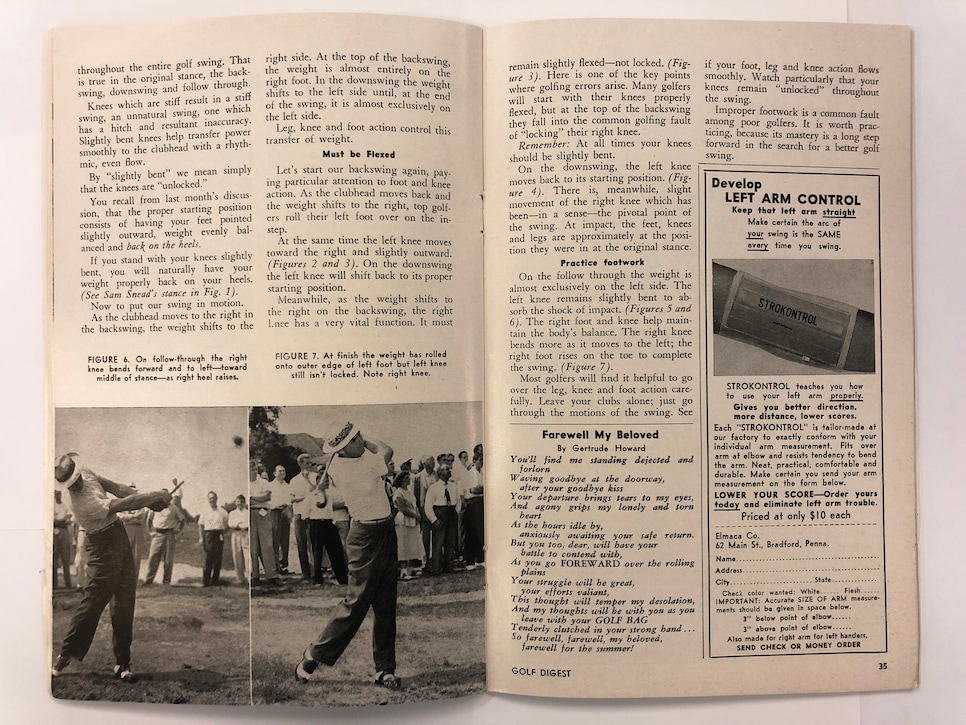Instruction
How golf's top players knew to use the ground for power—even 50 years ago

In celebration of Golf Digest's 70th anniversary, we went back through our archives to find a collection of interesting—and sometimes controversial—instruction images and asked today's top teachers to give their contemporary interpretation of the advice from decades past. In this story from June 1953, soon-to-be 1953 PGA champion Johnny Revolta analyzed Sam Snead's leg action to Golf Digest readers, and gave us his advice about how to best work on your footwork. Sound familiar? It should.
Revolta had to rely on feel, experience and the occasional still photograph to get his message across. Modern teachers have many more tools at their disposal, and data from tour pros and amateur golfers to study.

(Photo by Harry How/Getty Images)
Top Arizona and New Jersey teacher Terry Rowles works with dozens of tour players and has done extensive research on the movements within a golf swing. “I think what Johnny said there is a kind of ‘back to the future,’ says Rowles, who is based at Metedeconk National in New Jersey. “We teach ground forces now, and he’s actually talking about what he and there players feel—ground forces—50 years ago. We know it to be true from data collection. He knew it from experience and intuition.”

What holds up today: Rowles says that the images from Revolta’s article could be used to this day to teach—and the idea of keeping some flex in the knees and letting the feet roll and unroll are still good ones. Revolta says Snead's weight completely shifts to his lead leg on the downswing, but the knee stays unlocked, not rigid.
As fascinating as it is to see Snead’s circa-1950s swing (and outfit), one thing Rowles is especially happy to quote from the article is how, even then, Revolta didn’t believe the swing should be analyzed in photographs. “I love that he says the swing shouldn’t be taken apart into individual elements,” says Rowles “It’s not stop-action frames. You don’t feel it or do it that way. It’s a movement.”
What doesn’t: Rowles has no quarrel with the substance of Revolta’s teaching. The only limitation is that Revolta didn’t have a time machine. Coaches and researchers are now able to use sophisticated measuring equipment like 3-D motion capture, force plates and radar to see what’s actually happening in a swing.
“My disagreement, if you want to call it that, is on language. What does ‘re-timing’ the swing mean?” asks Rowles. “We’ve gone through a technical revolution where we call things by their actual name. We’ve gotten better organizing the information, making it a consistent language across players and transferring it. We’re not relying on a player’s non-specific description of a feel.”
Still fun to see how players thought about the ground back then, particularly because it's such an on-trend topic in golf instruction today.

